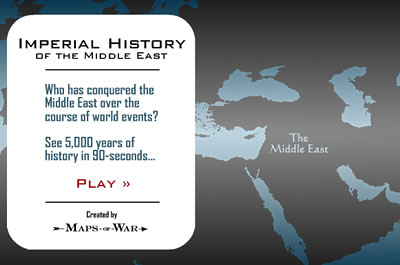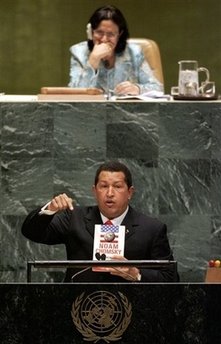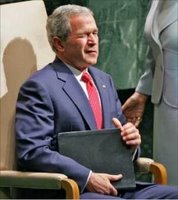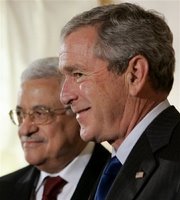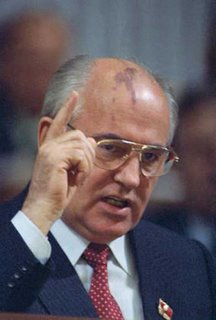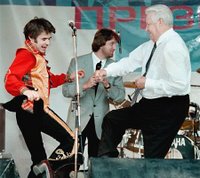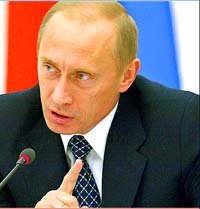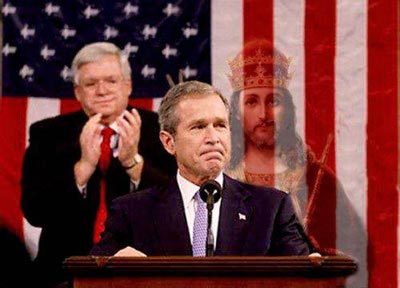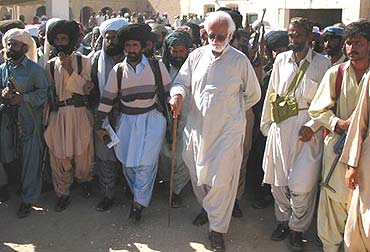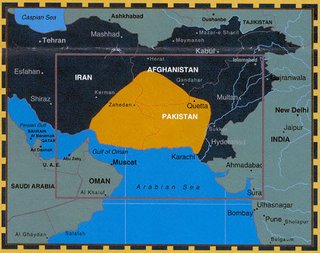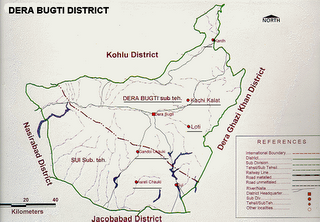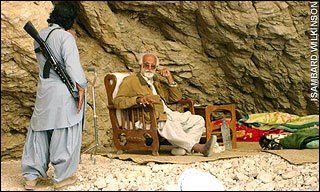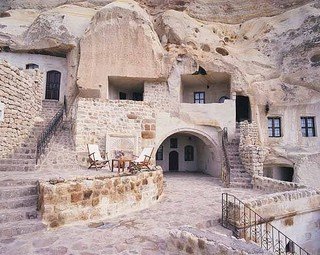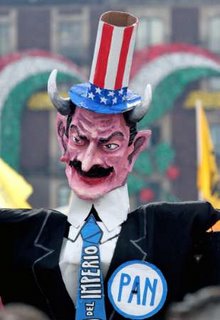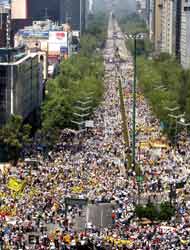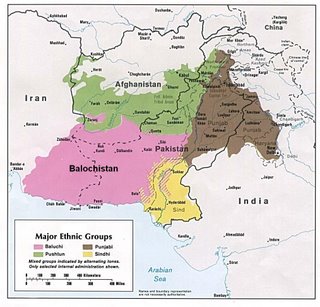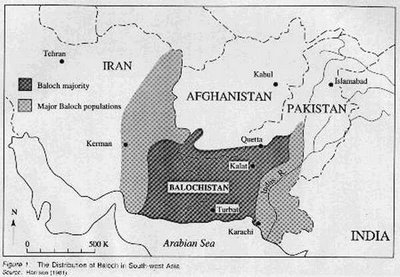
The Balochistan Crisis – Part Two
February, 2006
Articles and ReportsAmicus
Continued from Part One
With this background in mind we come to the present situation in Balochistan that needs to be looked at from domestic and international perspectives, for it is far more complex than what had been happening in the past.
The geopolitical changes in the post-Cold War period, together with the cataclysmic events related to 9/11, have imparted great importance to Balochistan and dragged Pakistan into what is referred to as the new ‘Great Game’, which is all about control of, and access to, the energy resources of Central Asia. In this regard, the following facts need to be highlighted:
1. The Central Asian Republics are rich in oil and gas resources. They are landlocked and in dire need of a corridor for export of their energy resources and a transit route for trade and commerce.
2. China has produced an economic miracle during the last decade or so. To maintain the momentum of its growth, China has three sets of requirements:
a) Transit trade route for its western region
b) Energy corridor to import oil from the Gulf region
c) Naval facilities or foothold on the Arabian Sea coast to protect its energy supply line from the Middle East.
3. India’s growth rate is also spectacular. For catering to its increasing energy requirement, it needs to look towards the Central Asian Republics and Iran. Its long-term strategic objective is to dominate the whole Indian Ocean region from eastern parts of African continent to South East Asia. It has its own version of ‘Monroe Doctrine’ for South Asian Subcontinent where it seeks absolute and exclusive hegemony.
4. The United States is pre-occupied with the obsession to maintain its super power status. To prevent the rise of any rival, be that China or any European power, the United States desires to dominate the Middle East and Central Asia, for they are rich in oil and gas resources. Apart from ‘war on terror’ and bogey of weapons of mass destruction, American occupation of Afghanistan and Iraq should be seen in the context of its quest for world hegemony. The United States wants to command important sea-lanes, be that the Strait of Malacca, the Strait of Hormuz or the Suez Canal.
5. Due to its common border with Afghanistan, the United States considers Balochistan territory as important for military operations against Al-Qaeda and the Taliban. In fact, the United States has military bases in Dalbandin and Pasni on the Balochistan coast.
Fully mindful of the tremendous opportunities at hand, Pakistan government has embarked upon or envisaged a number of projects that have potentials to change the destiny of Balochistan.
The most important of all the projects is the Gwadar port that is being developed with the financial and technical assistance of China. The agreement for the construction of this deep-sea port on the Arabian Sea coast of Balochistan was concluded in 2001. The work on the project began in 2002 and its first phase was completed in January 2005. The Gwadar Port is situated at a distance of 725 km from Karachi and 72 km from the Iranian border and on completion it would serve as a transit route for Central Asian Republics as well as China.
The Gwadar Port would help China in enhancing its energy security by offering a transit terminal for oil imports from the Middle East and the Gulf region. At present the bulk of oil imported by China has to pass through the Strait of Malacca, a route that is quite long and increases the risk factor in abnormal times due to American presence in the region.
China is very much concerned about its energy security, and is, acquiring different facilities in Bangladesh, Myanmar, Cambodia and Thailand. [5]
After completion of the second phase, the Gwadar port would be able to receive oil tankers with a capacity of nearly 200,000 tons. Obviously it is not exclusively meant for China and a number of countries would use the facilities at Gwadar when it becomes the gateway to Central Asia.
Apart from a source of earning, the Gwadar Port is important for Pakistan from strategic and defense point of view. During the war of 1971, India had successfully blockaded the port of Karachi that could have choked the economic lifeline of Pakistan. There was a serious apprehension in the midst of the Kargil confrontation in 1999 that the Indian Navy might try to do the same again. To strengthen its naval defense, Pakistan has completed the construction of Ormara base.
Now, the Gwadar Port would not only be a relatively secure alternative port for Pakistan but with Chinese presence it would be a strong impediment for India in the realization of its hegemony in Indian Ocean region. During the 1970s, Pakistan had supported American naval presence in the Indian Ocean, including its plan to develop the Diego Garcia military base, to counter Indian domination. With the United States and India coming closer for their strategic objectives, it is extremely important that China makes its presence felt for the same purpose.
As stated above, Balochistan has the potentials to offer energy corridor to the Central Asian Republics. In this regard, there is a plan to construct a gas pipeline from Daulatabad to Gwadar via Afghanistan for onward export to South East Asia. For this purpose, Pakistan, Turkmenistan and Afghanistan have already concluded an agreement.
Lately this project was overshadowed by Iran-Pakistan-India gas pipeline project to be completed at a revised cost of $ 7 billion. Signed in January 2005, India has an agreement with Iran under which Iran is to supply 7.5 million tons of liquefied natural gas annually to India from 2009 for next 25 years. The proposed gas pipeline project, if completed, would fetch $ 700 million per annum for Pakistan. India and Pakistan are under intense American pressure to give up the project.
The United States and India are in the process of finalizing a deal on transfer of advanced nuclear technology from America to India for use in civilian nuclear program. As quid pro quo, the United States has demanded opening up of Indian civilian nuclear facilities for inspection by International Atomic Energy Agency (IAEA) and abandonment of Iran-Pakistan-India gas pipeline project.
In a recent statement, General Pervez Musharraf has asked for “compensation” if Pakistan agrees to drop the idea of implementing this economically lucrative project. The United States has no objection on Turkmenistan – Afghanistan -- Pakistan or Qatar – Pakistan gas pipeline and extension of any of them to India.
In case sanctions are imposed on Iran or the United States opts for military strike to prevent Iran from acquiring nuclear weapons, these alternative projects may go ahead first.
Without proper infrastructure the real potential of Balochistan could not have been realized. Therefore, the government has planned to construct a network of roads linking Gwadar with Karachi, Pasni, Ormara and Turbat. This Coastal Highway will reach the Iranian border at Gupt. Simultaneously, the whole network would be connected to the Indus Highway and through it to China.
There is also an agreement concluded between Pakistan, China, Kazakhistan, Kyrgistan and Uzbekistan for development of railroad to link Central Asia and Xin Jiang province of China with the Arabian Sea Coast. [6]
In shaping its foreign policy Pakistan has given due consideration to the sensitivities and capabilities of the external players as would be evident from the discussion below:
The Chinese have vital interest in sovereignty, political independence, security and territorial integrity of Pakistan. In politics one does not have permanent friends or foes but because of the nature of China’s stakes in Pakistan it can be relied upon to stand by Pakistan in thick and thin. Both China and Pakistan have identity of interests in denying India any hegemonic role in the Indian Ocean.
Therefore, China’s presence on the Balochistan coast of Arabian Sea is beneficial for Pakistan. China is also expanding its cooperation with Pakistan in Saindak project. It is also a positive sign that Pakistan is not prepared to play any role in American design to contain China and is not willing to offer any facilities to the United States that may be considered as detrimental to Chinese security interests. All credit goes to the Musharraf government for concluding the Treaty of Friendship, Cooperation and Good-Neighborly Relations with China on 5 April 2005 that has provisions to the above effect. [7]
The United States does not seem to be very happy with the Chinese role in Balochistan. In the first place, it goes against the America policy which is to develop India as a counterpoise to China in the Indian Ocean region.
Secondly, Chinese presence at Mekran Coast, right at the mouth of the Strait of Hormuz, which enhances China’s energy security and enables it to intercept communications of American military bases in the Gulf and to monitor naval movements in the region, is something unpleasant for the United States. Therefore, it may be in the interest of the United States to let Balochistan remain disturbed to an extent where progress on mega projects slows down.
By promoting Balochi nationalism, America can also hope to create problems for Iran in its Balochistan. However, the United States is in a dilemma because it realizes that the Pakistan government may have to rely on Islamic militants to counter the Balochi nationalists and that would have a negative impact on its so-called ‘war on terror’.
Frederic Grare, an ex-diplomat and expert, (presently with Carnegie Endowment Trust in USA) on South Asian affairs, has expressed his opinion in a recent study that “the Pakistan army (allegedly) exercises its power by manipulating Islam to weaken Baluch nationalism.” [8]
He may be right. However, Americans and other stake holders in the region should be vary of pushing Pakistan into a situation that may coerce Pakistan into making such compulsive choice in its National interest.
American dilemma is likely to restrain it from supporting the nationalists in Balochistan in any meaningful way. The United States ought to be well aware that by making any move that may antagonize Pakistan, it would only push that country further towards China.
The other option for the United States is to work for creation of an independent Balochistan. But that is an extremely risky business and may plunge the whole region into turmoil with China fighting a proxy war against America. With its hands full in Iraq and Afghanistan, the United States cannot afford to go for such an option.
The unrest in Balochistan is in India’s interest for various reasons: First to impede China from projecting its power in the Arabian Sea that India wants to be its domain. Secondly, to prevent Pakistan from offering safe transit route to Central Asian Republics, so that they opt for alternative Afghanistan–Iran route. India has been investing on Zaranj-Delaram road to facilitate trade links with Central Asia via Iran and Afghanistan. Thirdly, to apply pressure on Pakistan that it should give up support to militancy in Kashmir.
The opening of Indian consulates in Jalalabad and Kandhar has facilitated the RAW in its activities inside Balochistan. Indian statement on the situation in Balochistan was a blatant interference in Pakistan’s internal affairs and was duly rebuked.
By continuing with composite dialogue with India and minimizing the level of infiltration, Pakistan is ensuring that India also shows restraint in Balochistan as a quid pro quo. Pakistan’s decision not to back or encourage full-fledged militancy is itself a built in leverage of sort.
India knows that if it crosses the threshold of Pakistan’s tolerance by enhancing its involvement in Balochistan, Pakistan could substantially increase promotion of militancy in Indian occupied Kashmir.
India does not have direct physical contact with Balochistan and that restricts its capability to intervene in Balochistan.
However, if India does not retract its present overt and covert overtures and flirtation with the disgruntled Sardars (Tribal Leaders) from its so-called diplomatic missions in Afghanistan, Iran and its South Block, it may qualitative hurt the composite dialogue and ancillary CBMs. Pakistan having direct borders with Kashmir is fully capable of tit for tat.
Provided Pakistan remains committed to the policy of non-interference in Iranian affairs and does not offer its territory to the United States for use against Iran, there is no reason for Iran to foment trouble in Balochistan.
In fact it is not in the interest of Iran that Balochi nationalism becomes strong in Pakistan, for that may spillover into Iranian side and revive the idea of ‘Greater Balochistan’. Very sensibly Pakistan has resisted American pressure to work for regime change in Iran and this is a guarantee that Iran would refrain from interfering in Pakistani Balochistan.
In the light of international constraints and compulsions, we may conclude that Pakistan is playing its cards well on the external front.
With the announcement of the mega projects, Balochistan started to simmer. The foremost reason was that the Pakistan government decided to tighten its hold over the province. It was felt that implementation, security and operation of the mega projects required greater and more direct control of the federal and provincial governments over the Balochistan territory.
For this reason and its threat perceptions and National Security concerns, the federal government announced the establishment of three cantonments, which was resented by Baloch nationalists and certain tribal chiefs.
In March 2005, the Prime minister of China was to inaugurate the first phase of the Gwadar Port when all of a sudden in January the level of insurgency reached new height and Sui erupted like a volcano on the pretext that a Lady Doctor posted there had been raped by some army officer.
The inauguration ceremony at the hands of the Chinese Premier had to be cancelled. To sort out the issues a special committee was set up, but no final solution could be achieved.
During the year 2005 there were 187 bomb blasts, 275 rocket attacks, 8 attacks on gas pipelines, 36 attacks on electricity-transmission lines and 19 explosions on railway tracks. At least 182 civilians and 26 security personnel were killed. [9] The situation took a particularly ugly turn when on 14 December 2005 President Musharraf went to visit Kohlu for announcement of a development package and rockets were fired at him. Subsequently, an army helicopter carrying the Inspector-General Frontier Corps (IGFC), Maj-General Shujaat Zamir Dar and his Deputy Brig. Saleem Nawaz, was fired at.
The government launched a para-military action that targeted training camps but the Baloch nationalists claimed that several women and children were killed. Since then bomb blasts and attacks on government installations of all kinds has become a routine and there have been incidents of sabotage in Punjab and Sindh. The official version is that a number of guerrilla training camps have been destroyed and selective action is being taken against the miscreants.
The crux of the Balochistan problem is that some of the tribal chiefs, in particular Mir Khair Bukhsh Marri, Attaullah Khan Mengal and Nawab Akbar Bughti, are not prepared to give up the privileged and effective position that they enjoy under the remnant of the Sandeman system. They are vehemently opposed to conversion of indirectly-controlled ‘B’ category territory into directly-controlled ‘A’ category territory for simple reason that it would undermine their authority and prestige.
However, the Baloch nationalists, including the tribal chiefs, have other complaints also:
1. They perceive the policies of federal government as against their national aspirations and demand recognition of ethnic identities in ‘multi-national’ Pakistan. The nationalist leaders refer to past experiences of Baluchistan with Pakistan government, in particular during the crises of 1958 and 1973-1977.They insist on greater provincial autonomy, including recognition of their rights on natural resources and ports, something that the federal government finds difficult to concede.
2. The middle class Baloch nationalists resent the fact they do not have proper representation in the armed forces and civil administration.
3. The Baloch nationalists also contend that the federal government ignored the economic and social development of Balochistan during last six decades. Potable water is not available in several parts of Balochistan. It lags in education. There is hardly any industrialization in the province. Even Sui gas, which was discovered in 1953, was first supplied to big cities of Sindh and Punjab.
4. The present mega-projects, according to the Baloch nationalists, are meant for the benefits of people from other provinces who would in due course colonize Balochistan converting the ethnic Balochis into a minority. They give the example of Sindh where the provincial government is at the mercy of non-Sindhis and anticipate the same future for Balochistan if unhindered influx of population from outside Balochistan in the name of development is allowed.
5. They resent the manner in which the mega projects have been conceived. Important jobs have gone to non-Balochis. The entrepreneurs from other provinces, in particular developers and builders, are minting money. Non-Balochis have benefited a lot from land speculation. Profitable contracts have gone to the armed forces personnel.
6. The Baloch nationalists are unanimously against the construction of cantonments in Kohlu, Sui or any other place.
7. In the past, the Bhutto government had failed to break the resolve of the Marris and Mengals, despite heavy deployment of troops and use of air power. According to one estimate some fifty-five thousand tribesmen fought against seventy thousand Pakistani troops during the 1973-77 insurgencies. The situation may not be much different today.
The common Baluch, uneducated and nurtured in tribal culture, has strong commitment to his chief and military action may lead to the involvement of the Pakistan Armed forces in a protracted and costly conflict. It is easy said than done that Pakistani troops can flush out the miscreants or destroy their sanctuaries.
No doubt, the Baloch nationalists do not seem to have strength to secure separation of Balochistan, but they do have the capability to damage transport and communication network at will through guerrilla warfare.
The sons of Khair Bukhsh Marri have established a foreign-based network to receive financial support and arms and ammunition. The Baloch Liberation Army (BLA) is said to be under their control. Akbar Bugti has his own force of about ten thousand tribesmen.
These tribal chiefs have managed to establish training camps where hundreds of disgruntled youth have been taught in use of weapons. The insurgents can also finance their war through drug-trafficking. The Pakistan government may be stretched to ensure security of pipelines, highways, railway tracks, electric towers and communication installations in sporadically populated and territorially vast Balochistan.
Given its own limitations and precarious geopolitical situation in the region, the preferable option for Pakistan government is to go gradually for the introduction of reforms in the existing administrative system.
Rather than imposing from above, let the urge for reforms come indigenously at appropriate time. Both the sides__ the government and the tribal chiefs __ have shown their muscles. It’s the time if the tribal chiefs offered a guarantee that development infrastructure and installations related to mega projects would be not be targeted, they should be taken on board and due monetary benefits from mega-projects be shared with the tribal chiefs in greater national interests.
As regards other Baloch grievances, there cannot be two opinions that the provincial autonomy enshrined in the Constitution of 1973 be granted in letter and spirit, more jobs be reserved for locals in the development projects, the share of Balochistan in the award of National Finance Commission be enhanced and necessary legislation, to the satisfaction of all genuine concerns of Balochis, be done regarding the settlement of non-locals in Balochistan as a result of mega-projects.
As regards establishment of cantonments, they should be proceeded with as the National Interest demands securing the borders, safe guarding the coastline, precious economic, geo-strategic, (land bound and maritime), national interests.
If the Baloch nationalists are not prepared to accept these conditions, the Pakistan government would have legitimate reasons to resort to selective military action against the miscreants.
About the author: Amicus is the pseudonym of Mohammed Yousuf Advocate, a Lawyer based in Karachi. He has written extensively on current affairs, with reference to South and Central Asia. He can be reached on mohammedyousuf@hotmail.com
References
1. A.B. Awan, Baluchistan: Historical and Political Processes, London: New Century Publishers, 1985, p. 201.
2. Quoted in Khalid B. Sayeed, Politics in Pakistan: The Nature and Direction of Change, Newyork: Praeger Publishers, 1980, pp. 3-4.
3. A.B. Awan, op.cit., p. 189.
4. Quoted in ibid., p 211.
5. For detail, see Sudha Ramachandran, “China’s Pearl Loses Its Luster”, Asia Times Online, 21 January 2006.
6. Wilson John, “Gwadar and the China Angle”, The Pioneer, New Delhi, 4 January 2005.
7. Mohammad Ali Siddiqui, “New Level of Friendship with China”, Dawn, Karachi, 9 April 2005.
8. Frederic Grare, Pakistan: The Resurgence of Baluch Nationalism, (Carnegie Paper), Washington D.C.: Carnegie Endowment for International Peace, Number 65, January 2006, p. 3.
9. Sudha Ramachandran, op.cit
